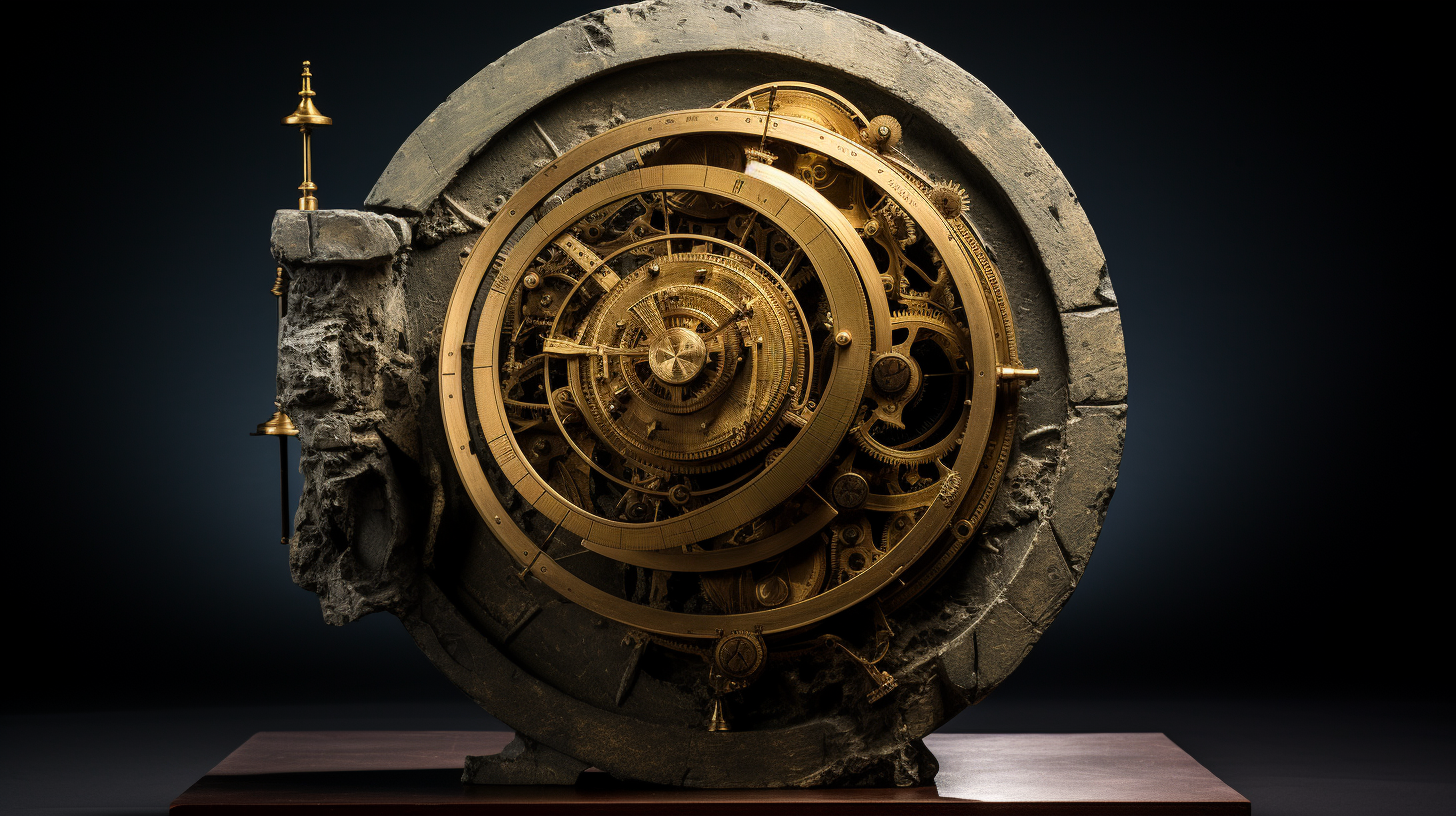Introduction
In the world of historical mysteries, few discoveries have captured the imagination like the Antikythera mechanism. Unearthed by sponge divers off the rocky shores of Antikythera, an island nestled between Crete and the Greek mainland in 1900, this ancient relic has perplexed scientists, historians, and even science fiction enthusiasts for over a century. Initially, it appeared to be an unremarkable corroded artifact, but as researchers delved deeper, they uncovered a device so intricate and advanced that it challenged our understanding of ancient technology. Could it be a time machine from the future, as some theorists propose? In this article, we’ll explore the fascinating story of the Antikythera mechanism and the debate surrounding its true nature.
The Discovery
The story of the Antikythera mechanism begins with a group of sponge divers returning from their fishing expedition in 1900. Caught in a fierce storm, their boat was swept near the treacherous waters off Antikythera. Miraculously, they avoided disaster, and after the storm subsided, they decided to take one last dive for sponges. What they found, however, was far more valuable than any sponge.
Diver Elias Stadiatus was the first to plunge into the depths. After a mere minute underwater, he surfaced in a state of shock, muttering about strange sightings in the deep sea. Captain Demetrius Elcondos, an experienced diver, decided to investigate. He descended into the water and returned with an extraordinary find—a bronze arm from a statue. What appeared to be submerged bodies were actually corroded statues from a shipwreck, lying on the ocean floor for over two millennia.

The Antikythera Mechanism Revealed
As the divers continued their exploration, they unearthed an astonishing array of artifacts: statues, pottery, silver and bronze coins, and exquisite jewelry. Among these treasures was an unassuming piece of corroded metal, roughly seven inches wide. Initially, it seemed insignificant, but its true significance would only emerge later. This unassuming piece came to be known as the Antikythera mechanism, named after its place of discovery.
The Antikythera mechanism, as it turned out, was far more complex than anyone had initially imagined. It consisted of three primary pieces and 82 separate fragments, most of which featured intricate gears. Its purpose remained a mystery, but its advanced design hinted at a level of technological sophistication that was seemingly impossible for its presumed time of creation—ancient Greece.
Unlocking the Secrets
For decades, scientists grappled with the purpose of the Antikythera mechanism. How could an object of such complexity exist in ancient Greece, and what was its intended use? In 2013, a team at Cardiff University, led by astrophysicist Mike Edmonds and mathematician Tony Freath, undertook a groundbreaking endeavor to unlock its secrets.
Their approach involved high-resolution surface scanning and computed X-ray tomography, resulting in a detailed 3D image of the mechanism. But the most astonishing discovery lay in the corroded writing that covered the device’s facade. Though challenging to decipher, these inscriptions amounted to hundreds of letters in ancient Greek, effectively transforming the mechanism into a partial user’s manual.
The manual confirmed that the Antikythera mechanism was, indeed, an astronomical computer, capable of tracking the movements of heavenly bodies. However, this revelation raised more questions than answers. How did ancient Greeks possess the knowledge and technology to create such a device?
Time Travel Theory
The Antikythera mechanism’s existence challenges conventional wisdom about ancient technology. While many historians argue that it’s a testament to the advanced knowledge of the Greeks, some theorists propose a radical idea—time travel. Could it be that the mechanism wasn’t created by the ancient Greeks but was instead transported from the future to the past?
Author J.H. Brennan, in his book “Time Travel: A New Perspective,” explores this notion. He suggests that the mechanism’s unmatched sophistication in astronomy, mathematics, and mechanical engineering makes it an outlier in ancient history. If it indeed originated in the future, then it serves as a tangible artifact from a technologically advanced civilization.
The Missing Pieces
Critics argue that the time travel theory is speculative and far-fetched. However, proponents point to the absence of similar devices or precedents in ancient history. Breakthroughs in science and technology typically evolve over time, leaving behind a trail of incremental progress. Yet, the Antikythera mechanism stands alone, devoid of any predecessors.
One of the most compelling pieces of evidence is the presence of a differential gear—a technology that didn’t resurface until the 18th century. This gear was crucial in calculating the angles between the Sun, the Moon, and lunar phases, a feat previously unheard of in ancient Greece.
Video:
Conclusion
While the Antikythera mechanism may not be a literal time machine, its origins remain shrouded in mystery. Whether a product of ancient Greek ingenuity or an artifact from the future, it challenges our understanding of history and technology. As researchers continue to decipher its enigmatic inscriptions and missing pieces, the Antikythera mechanism continues to captivate our imaginations, reminding us that history is a treasure trove of mysteries waiting to be unraveled.

16 thoughts on “Deciphering the Mystery of the Antikythera Mechanism: Ancient Greek Time Machine or Time-Traveler’s Relic?”
Comments are closed.